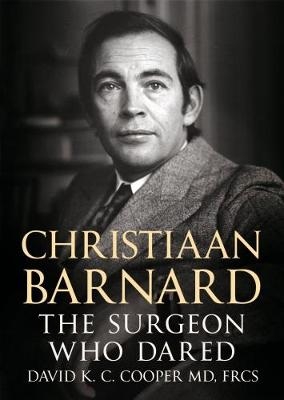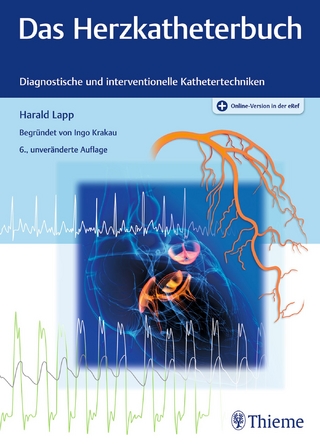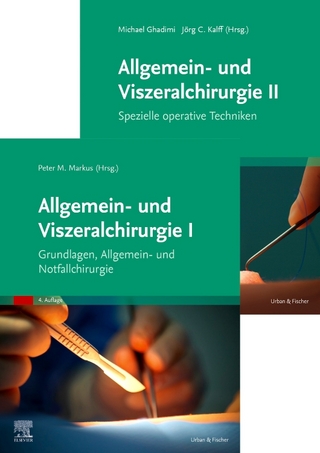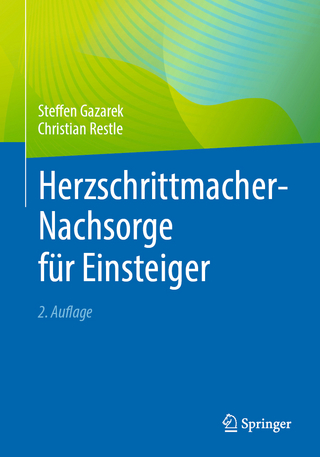
Christiaan Barnard
Fonthill Media Ltd (Verlag)
978-1-78155-639-9 (ISBN)
From humble beginnings as a `barefoot boy’ in a small town in the heart of South Africa, he learned to mix with presidents and prime ministers, with royalty and popes, and quickly embraced the high-life of the jet-set who surrounded him. Throughout life, he was a serial womanizer, bedding famous European film stars (and their secretaries). He survived three tempestuous marriages and divorces, each wife becoming younger than the last until their age difference reached 40 years. This scientifically-trained surgeon called on the services of a `witchdoctor’ (a sangoma)—unsuccessfully—to help punish those who had contributed to the break-up of his second marriage. With no experience himself, he trained his daughter to become the second-ranked water skier in the world, though he was disappointed she never became world champion. Perhaps the immense effort he put into driving her to success accounted for the relative neglect of his oldest son, who, as a young doctor, suffered increasing depression until he died of a drug overdose at an early age. The surgeon pursued his goals in heart surgery despite a lifetime of pain from arthritis and a disability from asthma, which might eventually have killed him.
Having established the first major heart surgery programme in Africa, he eventually became distracted by other interests until he was a mere shadow in his own department. Yet he remained in the public eye through his gifts for public speaking and as a writer. He travelled the world, published two autobiographies, wrote popular books on health for the public, particularly relating to heart disease and arthritis, and penned books on such varied subjects as the politics of apartheid in his homeland, and euthanasia. He became a well-regarded and popular columnist for several South African newspapers, and collaborated on the writing of four novels. He branched into the business world and expanded the meagre financial rewards earned from his surgical services to the South African health care system by investing in restaurants in Cape Town, establishing a game reserve in the hinterland of South Africa, and causing controversy by his role in advertising a cream that reputedly prevented wrinkling of the skin. He set up a heart research foundation and a foundation that paid for children from all over the world to travel to Cape Town for corrective open heart surgery.
This charismatic and controversial man was Chris Barnard who, by the way, also dared to carry out the world’s first human heart transplant in December 1967.
Can we summarize Chris Barnard? Not very easily. He was a first-class doctor—skilled, knowledgeable, compassionate, conscientious, concerned, decisive, and wise. He was an inquiring and innovative surgeon—though famously irascible in the operating room—with a vision of the future developments in his chosen field, and the ability, judgment, and courage to play a part in contributing to those developments. He was an informative and highly entertaining speaker and raconteur, a gifted writer, farmer, restaurateur, an unofficial ambassador for his country—and a good friend.
David Cooper was born in London and studied medicine at Guy’s Hospital Medical School, where he was influenced by the eminent heart surgeons, Lord (Russell) Brock and Donald Ross. After periods of teaching at Harvard Medical School in the USA and research at the National Heart Hospital in London, he combined his training in general surgery (under the transplant pioneer, Sir Roy Calne, in Cambridge) and cardiothoracic surgery (in London and Cambridge, under Sir Terence English) with teaching at Magdalene College, Cambridge, where he was a Fellow from 1972 to 1980. He was present at the first heart transplant in the UK in 1968, and a member of the surgical team that established heart transplantation in the UK in 1979. He then took up an appointment in Chris Barnard’s Department of Cardiac Surgery at the University of Cape Town, where he remained for more than seven years. In 1987 he joined Chris Barnard at Baptist Medical Center in Oklahoma City where he shared responsibility for patients undergoing heart transplantation and was Director of Research and Education at the Oklahoma Transplantation Institute. In 1996, he accepted a senior research position at the Massachusetts General Hospital and Harvard Medical School in Boston where he explored the possibility of using pigs as sources of organs for transplantation into human patients, a topic he had investigated since his days in Cape Town. Between 2004 and 2016, he was a professor of surgery at the Thomas E. Starzl Transplantation Institute at the University of Pittsburgh where he continued this research. Currently, he is co-director of the xenotransplantation program at the University of Alabama at Birmingham. Cooper is the author or editor of several academic books on organ transplantation and co-author of more than 850 scientific and medical papers or chapters related to clinical heart transplantation or cross-species organ transplantation research. His previous books for the layperson include `Xeno’ (2000, co-authored with Robert Lanza) in which he outlined the potential of using pigs as sources of organs for clinical transplantation, `Open Heart’ (2010), the story of the surgeons who pioneered heart surgery, and `Doctors of Another Calling’ (2014, editor), which recounts the lives of physicians who are known best for their contributions outside of medicine. In `Chris Barnard, the Surgeon Who Dared’, David Cooper draws on his personal knowledge of Chris Barnard, with whom he remained friends until the latter’s death in 2001, and on his great experience in the field of heart transplantation, which involved him for 17 years.
Foreword: Sir Roy Calne; 1 The most unforgettable character; 2 Barefoot boy—childhood; 3 Learning his trade—medical school and junior doctor; 4 The New World—surgical training in Minneapolis; 5 Mentor and maverick—Walt Lillehei; 6 Proving himself—establishing heart surgery in Cape Town; 7 Prelude to the first heart transplant; 8 Studying kidney transplantation with David Hume in Virginia; 9 Life’s defining moment—the first human-to-human heart transplant; 10 The heart transplant heard around the world; 11 The controversy over Hamilton Naki; 12 The first survivor—Barnard’s second heart transplant; 13 Heart transplant fever; 14 Meeting of the minds—the first international conference; 15 The consequences of fame; 16 A way with words—Chris as a public speaker; 17 Fame over family; 18 Staying ahead of the pack—subsequent heart transplants in Cape Town; 19 Another innovation—the piggyback heart transplant; 20 Second wife, second life; 21 Insight and innovation—important advances in heart transplantation; 22 A price too high—personal tragedies; 23 Money matters—business opportunities; 24 New horizons—Oklahoma City; 25 Three strikes and you’re out (third marriage); 26 The media—make and break; 27 Putting pen to paper—a secondary career; 28 Was everything black or white? Chris’s opinions on apartheid; 29 The Nobel Prize—should Chris have received it?; 30 Old age and death; 31 Looking back; Appendix 1–Today–progress in alternative forms of heart replacement; Appendix 2–Chris Barnard–biographical outline, degrees, awards and honours; Appendix 3–Books written by Chris Barnard; Appendix 4–Select bibliography; Appendix 5–What happened to the other players in the heart transplant story?.
| Erscheinungsdatum | 27.07.2017 |
|---|---|
| Zusatzinfo | 85 colour and black and white photographs |
| Verlagsort | Toadsmoor Road |
| Sprache | englisch |
| Maße | 156 x 234 mm |
| Gewicht | 950 g |
| Themenwelt | Literatur ► Biografien / Erfahrungsberichte |
| Sachbuch/Ratgeber ► Geschichte / Politik | |
| Medizinische Fachgebiete ► Chirurgie ► Herz- / Thorax- / Gefäßchirurgie | |
| Medizinische Fachgebiete ► Innere Medizin ► Kardiologie / Angiologie | |
| Medizin / Pharmazie ► Medizinische Fachgebiete ► Medizinethik | |
| Studium ► Querschnittsbereiche ► Geschichte / Ethik der Medizin | |
| ISBN-10 | 1-78155-639-3 / 1781556393 |
| ISBN-13 | 978-1-78155-639-9 / 9781781556399 |
| Zustand | Neuware |
| Informationen gemäß Produktsicherheitsverordnung (GPSR) | |
| Haben Sie eine Frage zum Produkt? |
aus dem Bereich


